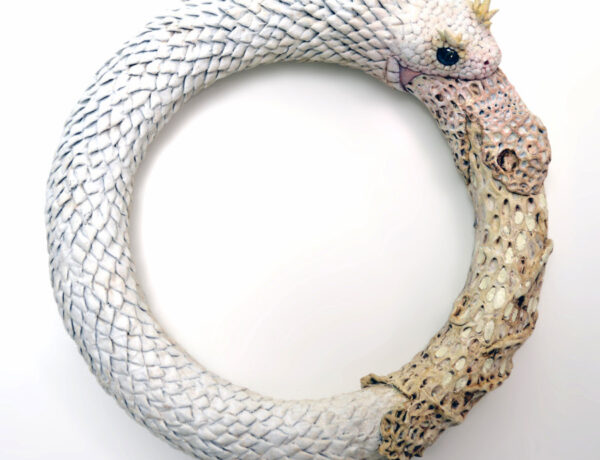Photography is a vast subject that one wishes could be divided into neat little boxes like snapshots and art. Where once it was the realm of the creative, now we hold complex cameras in our pockets ready to memorialise an image of a cute cat or what we are having for lunch. Filters, apps and editing tools have made creating unique images more accessible to the masses. And yet, no matter how powerful and complex the cameras hidden within our phones – we are able to recognise the difference between a photograph and fine art photography. There is a small number of artists creating complex, layered set pieces and captivating images that transport you from this world to another through strong images, symbolic elements and careful lighting. Moving away from the ordinary to create complex pieces, that just happen to be captured by a camera rather than through paint. Leigh Schneider is one of these artists.
Creating powerful images with what could be considered dark motifs but on further inspection are filled with hope…a stealthy optimism, in her own words.
I like the idea that you don’t always know where my work is taking place and that the language spoken is symbolic and emotional…
Exclusive Interview with Leigh Schneider
You were born and spent much of your childhood in New Zealand before travelling and settling down in Germany. How do you think travelling and embracing different cultures has influenced your work?
The challenges of building a new life in a foreign culture (and language) pushed me deeper into finding myself as an artist. It was almost like being in this ‘cocoon’ at first – there were fewer distractions and at the same time, many new areas to develop in. I found different cultures to be like parallel realities and began to understand both the diversity and universality of people. I think experiencing these ‘different worlds,’ inspired me to create art on the border of real and otherworldly.
I like the idea that you don’t always know where my work is taking place and that the language spoken is symbolic and emotional – and therefore can be understood in both of my home countries and in others too.
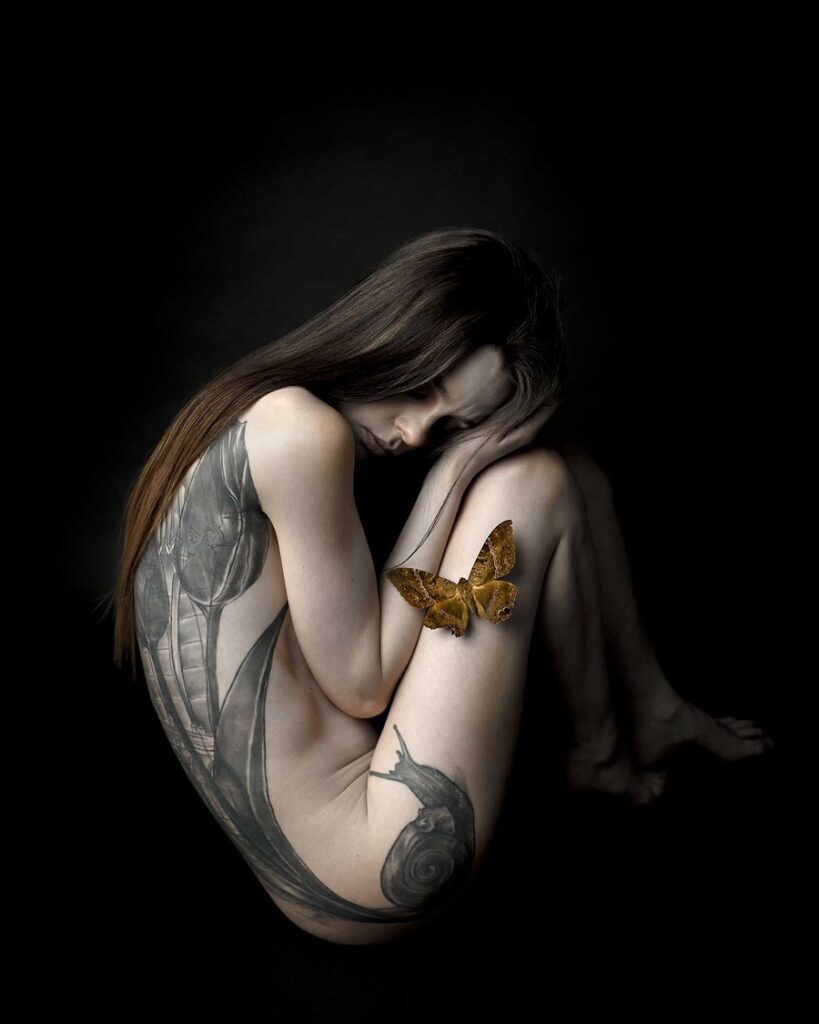

It’s often said that an artist’s journey is not linear and your career is a perfect example having started in photography at a young age, worked in graphic design and returned to photography after a house robbery. Looking back at that moment what gave you the courage to return to photography rather than continue in graphic design?
Photography was on the periphery of my studies and in social projects here and there over the years. Yet somehow it took the loss of all my design files and gear in that robbery to help me realise how I wanted to reinvest in resources and use my time.
I saw it as an opportunity to start over and really give photography my full attention. Having also recently moved countries, it was a good time for reinvention and I had the support and encouragement of my husband as well. So looking back, I’m grateful!
What skills or elements did you learn in graphic design that have helped or hindered you as photographer?
My background in Graphic Design provided a great foundation for my photography. I learnt the principles and process behind visual communication and how to use symbolism to convey a message, which is what my imagery does now. I think it influenced the motivation behind my work – to create with intent and not based solely on aesthetics.
While my work might appear on the surface to be dark aesthetically, the core of my concepts focusses on the light. I’m inspired by the idea of a world beyond what we immediately see, as well as human emotion and the capacity we all have for transformation and growth.
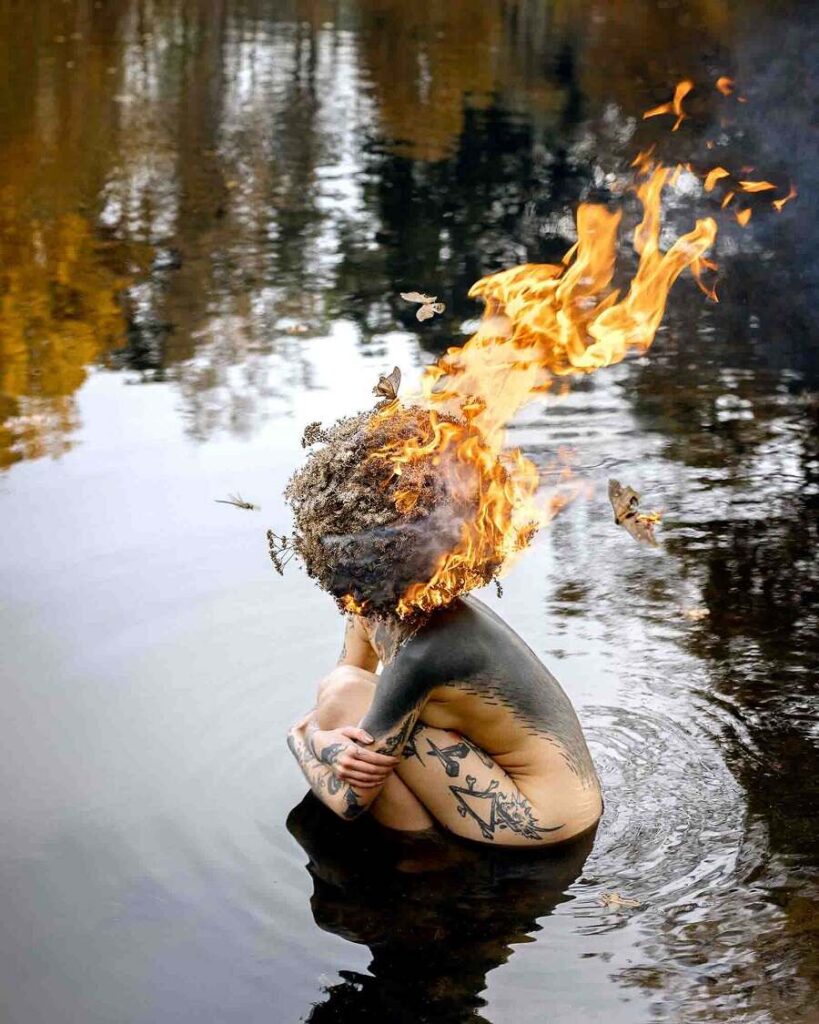
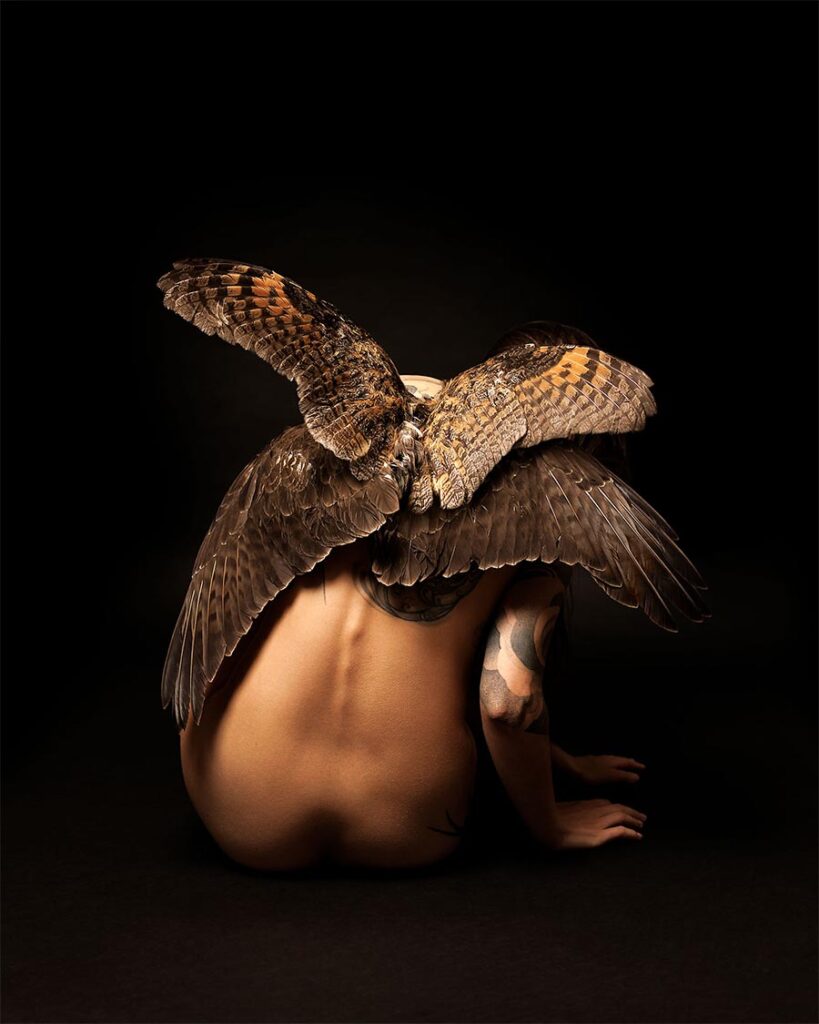
Creating based on intent rather than solely aesthetics is a powerful notion. Can you explain what this means to you?
I believe there is more to life than what meets the eye and like the idea of reflecting that in my art. Artists have the fairly unique possibility, to send messages out into the world through their work. I’m also quite aware that our time here is limited. I admire those who use theirs to do what they do well, to the best of their ability, and who use their skills to benefit others and not just themselves. This would be one of my aspirations. I really hope my work meets someone where they are at and gives them a vision of hope, or helps them to consider something deeper.
Your work could be considered dark conceptual with underlying themes of loss, addiction, and transformation. However, underlying this are also themes of hope and growth. How do you balance the two?
While my work might appear on the surface to be dark aesthetically, the core of my concepts focusses on the light. I’m inspired by the idea of a world beyond what we immediately see, as well as human emotion and the capacity we all have for transformation and growth. For this reason, I don’t really think of my work as ‘dark,’ as much as ‘stealthily optimistic.’
When representing heavier themes, I include symbolic elements for the viewer to discover and contemplate that point at a way forward. My subjects are often in a process or posed with a choice. I think this balance is therefore found in the combination of a darker aesthetic with hopeful messaging.
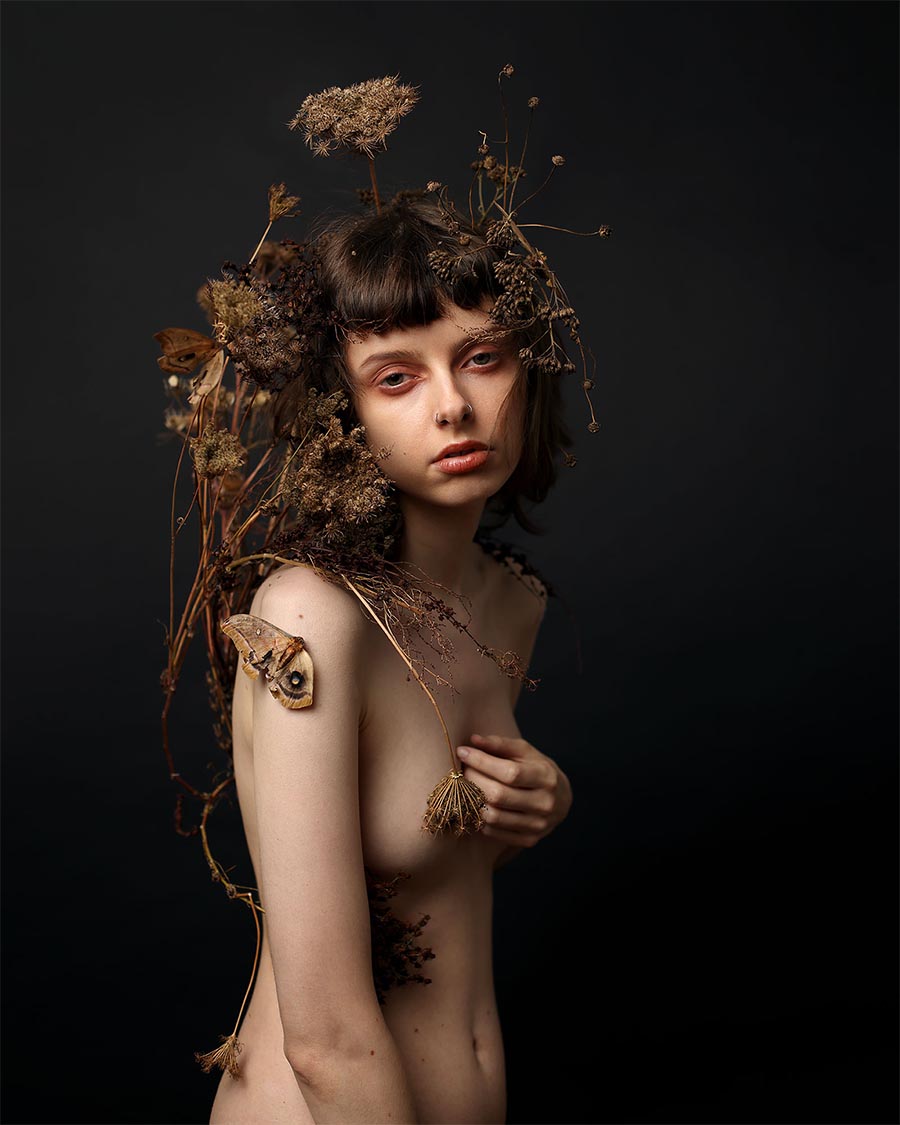
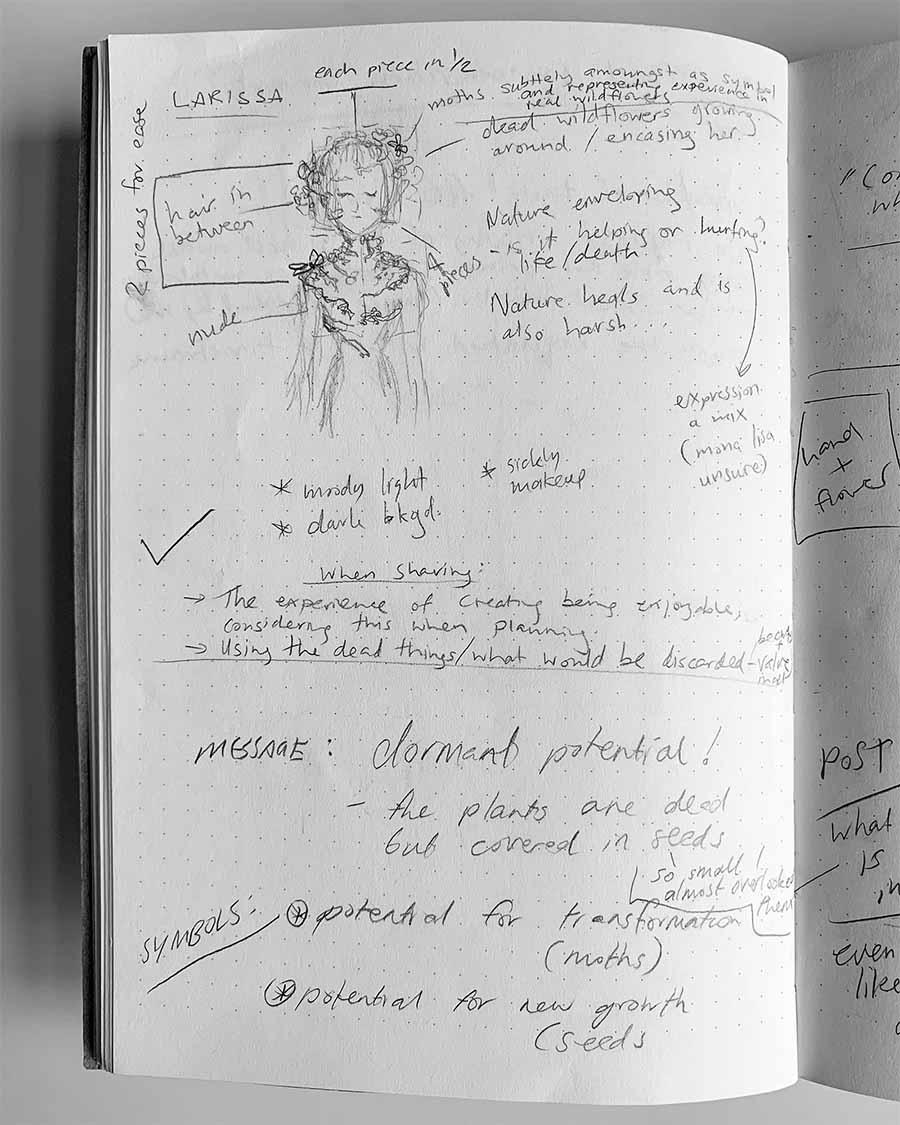
You’ve mentioned your work often begins in written form, accompanied by rough sketches. What form does your writing take – is it a physical description or an emotional one? Jotted notes or fully-fledged paragraphs? And how closely does the final image resemble your written word?
There are so many symbols, reflections and lessons hidden in nature and the way life works. So often I’ll first write down these thoughts and then use sketches and annotations to describe what might visually communicate them.
In the final image, what I’ve written can usually be recognised thematically and symbolically, while my sketches are usually seen reflected in the elements and composition.
You create works both in the studio and in nature. Do you have a preference for the studio or nature and what are some of the challenges each brings?
I really enjoy both, for the range of possibilities they provide. I’ve also started to really enjoy combining the two – that’s something I’d like to do more. With studio shoots, I love the ability to control light and atmosphere and story tell in this way. It’s a distraction free environment, which allows for focus, comfort and simplicity. In this space, every little detail added to the frame is done with intent.
With shooting in nature, there are beautiful elements to work with and ever changing light. This means no location remains the same for long and some details are first discovered in post. I love the surprise and collaborative feeling this provides – like I’m working with something bigger than myself.

How important is the relationship between photographer and model? Your models have posed with large moths, sat nude (or semi-nude) in lakes and streams, and even appear to have had a flaming headdress. How do you build this trust?
I’m grateful to my models – they are bold of heart! The flaming headdress was shot on a stand over the water, separate from the model. I have had a few people ask about this though!
I try not to see the models I work with as mannequins for my ideas, but rather as artworks in themselves and people with stories of their own. In addition to communicating about the idea and what it will involve in advance, I like to spend a little time together before we begin the shoot. Then we can set the right atmosphere, become relaxed and focused and best explore the concept together while shooting.
How has the pandemic effected how you interact with your models? Has it resulted in any revelations for future works or is it something that has only presented challenges?
The pandemic meant that I was unable to shoot with models for a time. I do think it has affected my future work for the better though. It provided the opportunity to pause and really assess the purpose and foundations of my art business. This meant that once I was able to shoot with models again, I was creating in much better alignment with that.
I’d recently worked with dead wildflowers and saw them as symbolic of hidden potential. Even when it seems like they are all dried up, they are full of tiny seeds, ready to start again.
You include interesting props in your work from the mentioned flaming head dress, to the recent use of what looks like bird of prey wings. Is it the discovery or creation of these props that prompts your ideas or do the ideas come first and then you source or create what you need?
There’s a fair bit of interplay between themes and ideas I’d like to explore and elements I discover that I see potential in. In the case of ‘Self Medication,’ (the flaming headdress image), I’d recently worked with dead wildflowers and saw them as symbolic of hidden potential. Even when it seems like they are all dried up, they are full of tiny seeds, ready to start again. It took over 20 hours to make the headdress, (not including time to plan, research and gather supplies), which was then set on fire to represent how addiction destroys potential.
In the case of the wings, I was offered them on loan from a taxidermy contact, so I developed concepts especially for them. The symbolism was very fitting for my current work.
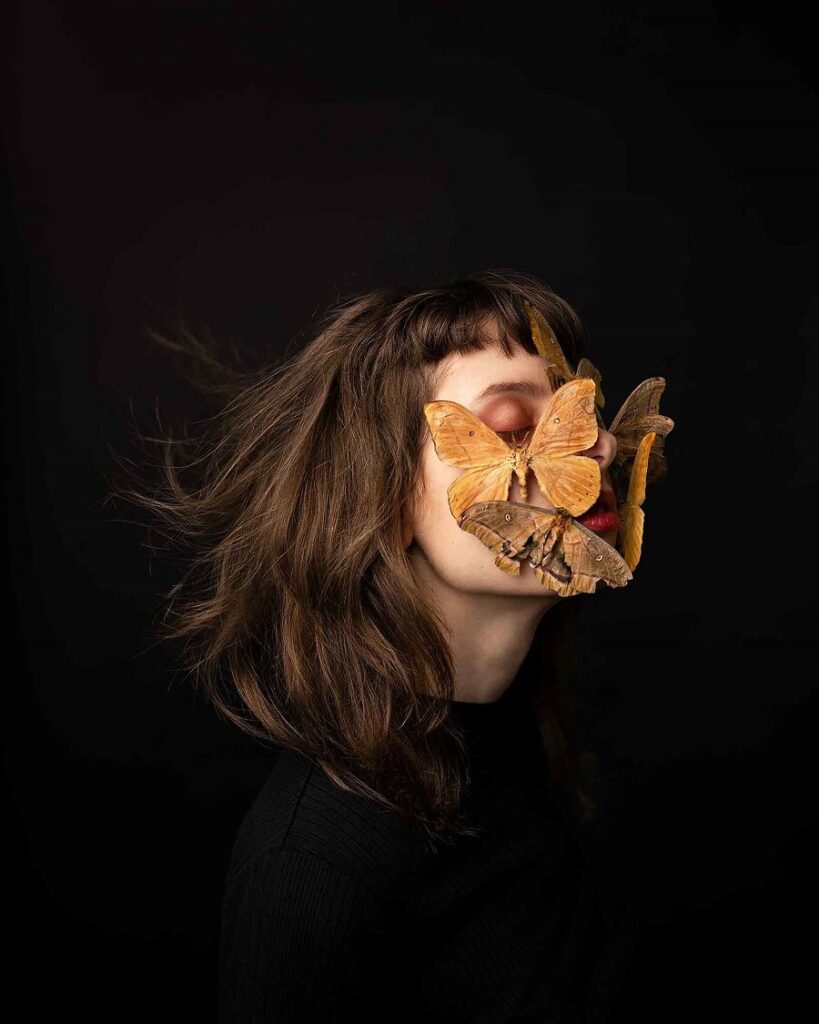
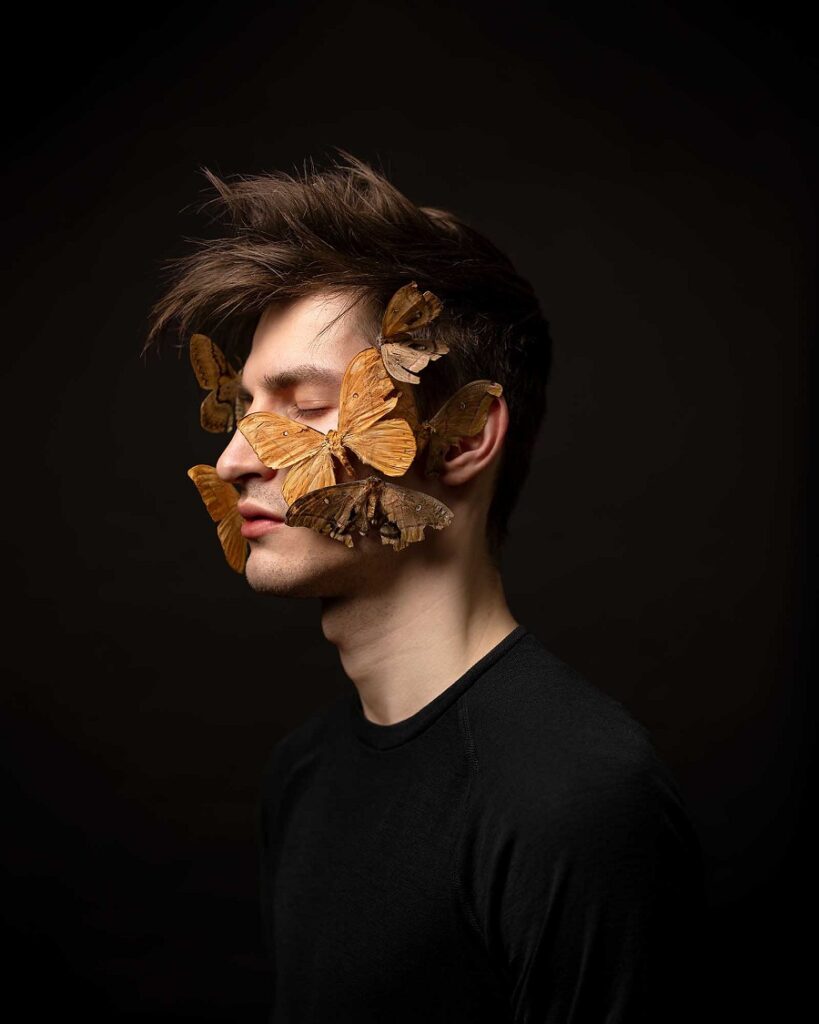
Every shoot is different and can involve developing new skills and working with new materials to realise.
The advancement of technology, the continued improvement of cameras in our phones, and the ability to alter images digitally has made photography more accessible but also lead to specialised niches within the medium. How do explain to people what you do, when photographer doesn’t truly reflect all the work you put into a piece?
That can be a challenge! I think sharing about the processes and stories behind my work is important. One of the things I love about using photography as an artistic medium, is that it involves so many varied aspects. Time is spent in concept development, planning and the hand making of props, as well as location scouting, the shoot itself and post production. Every shoot is different and can involve developing new skills and working with new materials to realise. So the time spent with a camera in hand is one part of a broader process.
Using photography as a fine art tool, my motivation is also different to other genres of photography. My goal is to find and refine the strongest image from the shoot, that best represents the concept. I’m not focussed on mass and most of my shoots produce between 1-3 final images. I share behind the scenes content via my social media channels and I’m working on a blog and video content that will detail more in the future.
Is there an idea or a vision in your head that you haven’t achieved yet? If so, what do you think needs to happen for you to realise this?
I’ve had an idea for a while, to create a giant cocoon. I’ve been really enjoying the use of moths in my work, as symbols of seeking light and transformation. I’d like to make it look as natural as possible – some moths build their cocoons with leaves and twigs for camouflage and some bury themselves in the ground. I’m still working on finding the right materials and construction methods to bring this across well.




